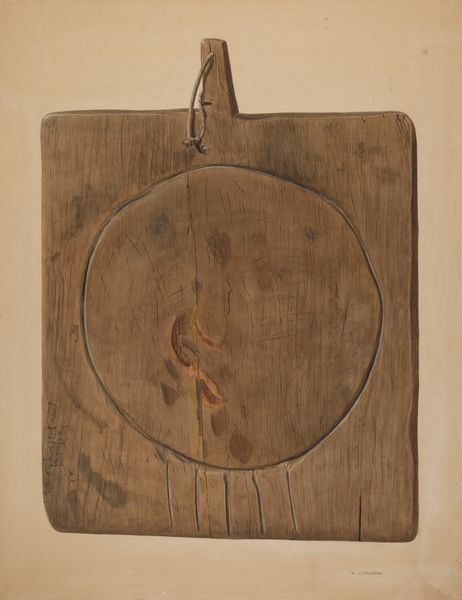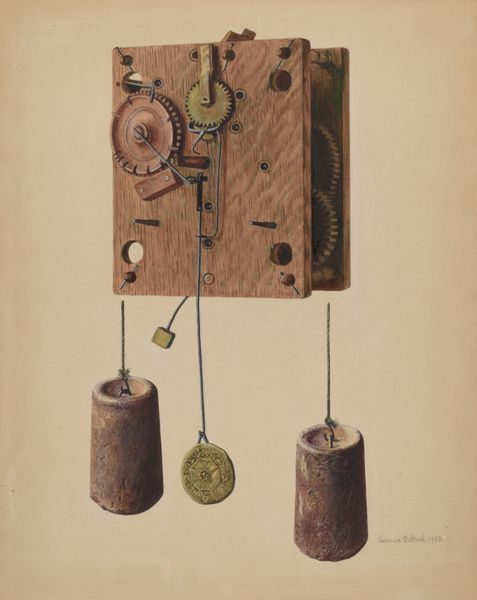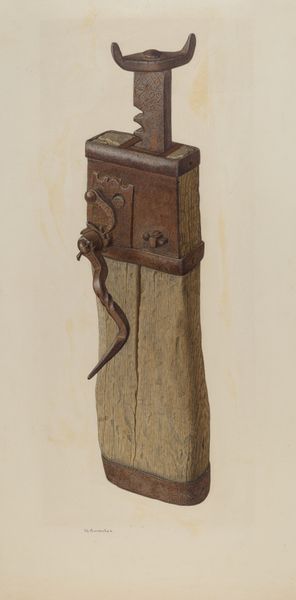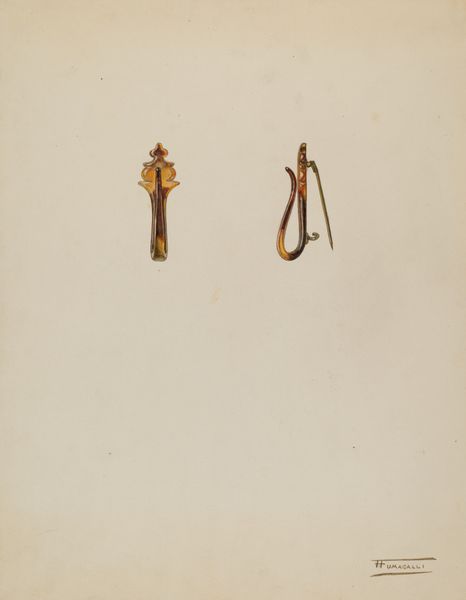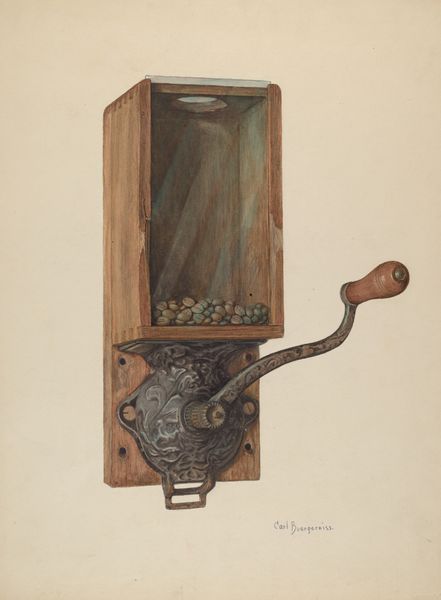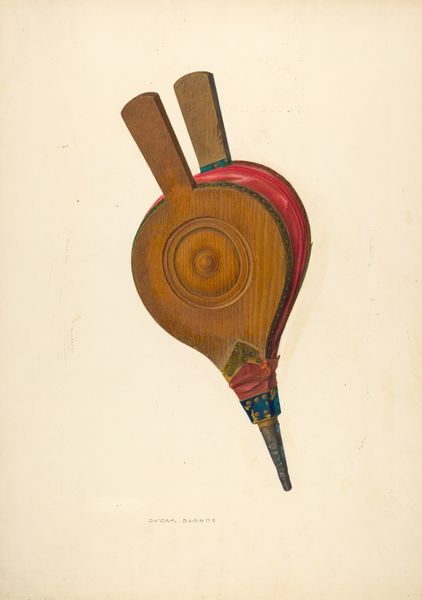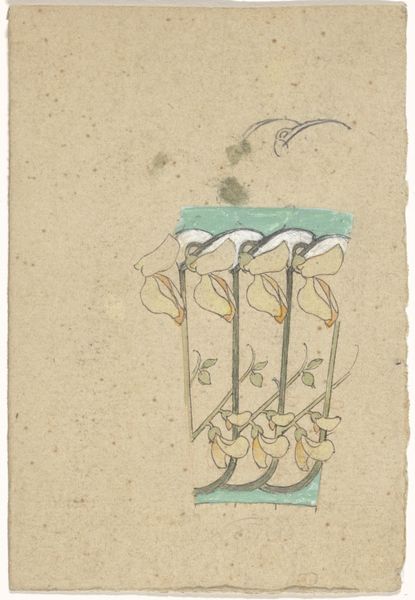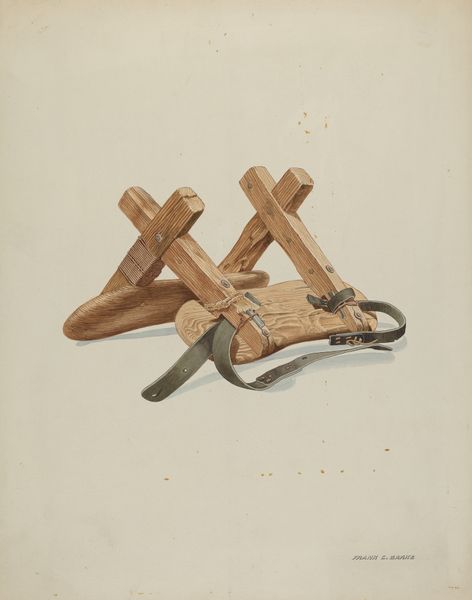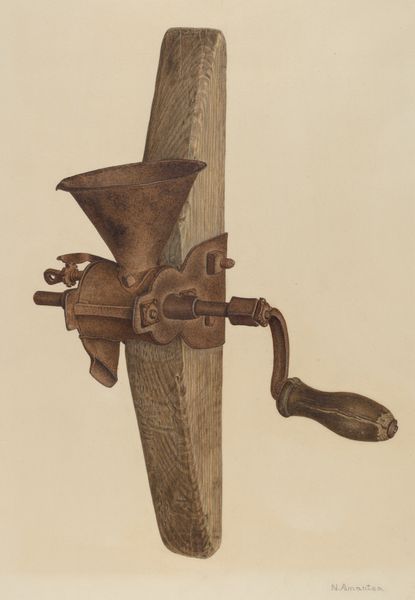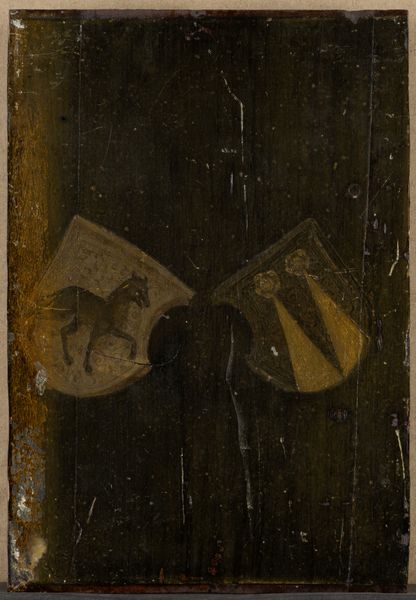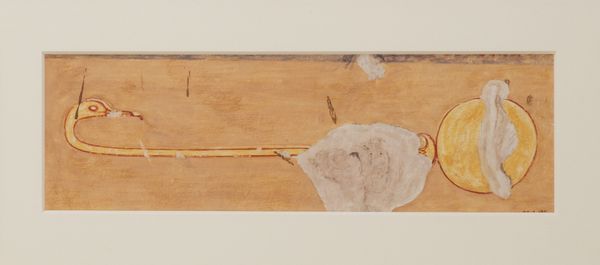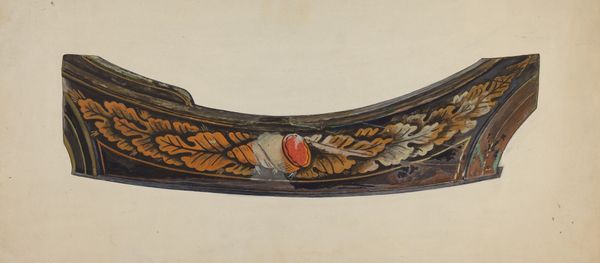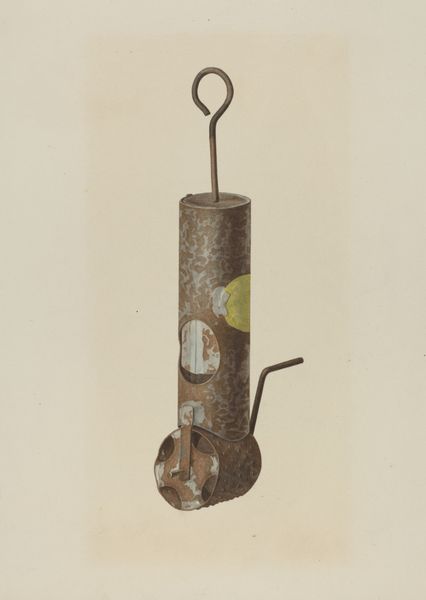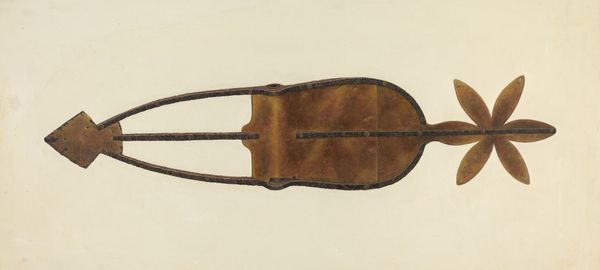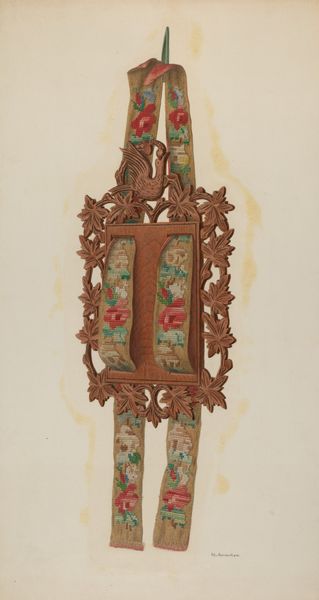
oil-paint
#
baroque
#
oil-paint
#
oil painting
#
trompe-l'oeil
Dimensions: 89.5 cm (height) x 77 cm (width) (Netto), 92.5 cm (height) x 80.5 cm (width) x 5 cm (depth) (Brutto)
Curator: At first glance, this painting seems so real, it might take a second to realize it’s actually just an image. It’s titled "Trompe l'Oeil with Pistols," created by Cornelius Norbertus Gijsbrechts around 1672. Editor: Absolutely! That intense realism is almost unsettling, right? I mean, it's essentially weapons art, playing on themes of power and the illusion of control, but on a painted canvas. Is there also the question of what "hanging on the wall" can say metaphorically? Curator: Precisely. Trompe-l'oeil, which means "deceives the eye" in French, was quite popular, particularly amongst the bourgeoisie in the Baroque Era. This example is a wonderfully literal showcase of material wealth. A saddle bag adorned with a regal emblem sits flanked by matching guns—hung almost carelessly against the simulated wooden background. Editor: It also reflects that period’s fascination with spectacle, I mean, what’s a still-life painting, really, other than a glorification of private opulence meant to be gawked at and consumed by its viewers. Gijsbrechts aestheticizes these deadly tools making it okay to invite danger into the house, to fetishize a violent potential. I would assume, because there are two, that the saddle bag with deer represents a hunter or protector. Is the deer motif perhaps symbolic of colonial pursuits in the Netherlands at that time? Curator: That's insightful! Indeed, art often reflects societal power dynamics. Here we also see that the wooden background may refer to the cabinet of curiosities and wonders found in prosperous merchants’ homes during the Dutch Golden Age. So the artist could have wanted to demonstrate how easily violence or disruption could be introduced even in one's most domestic safe havens. Editor: I think situating the guns against this simple wood backdrop enhances the class implications too. These tools and accessories aren't meant to blend, to fade, or perform. On the contrary, they assert dominance. Curator: Thinking about that intentionality—from composition, placement and overall illusionistic treatment—lends a whole new layer of insight into the politics of imagery. Editor: And honestly? The sheer strangeness of hanging a literal gun display... in art form... definitely keeps the question of agency—and accountability—top of mind. It can teach us about art historical context, its effects, and the narrative it projects for future viewers.
Comments
No comments
Be the first to comment and join the conversation on the ultimate creative platform.
